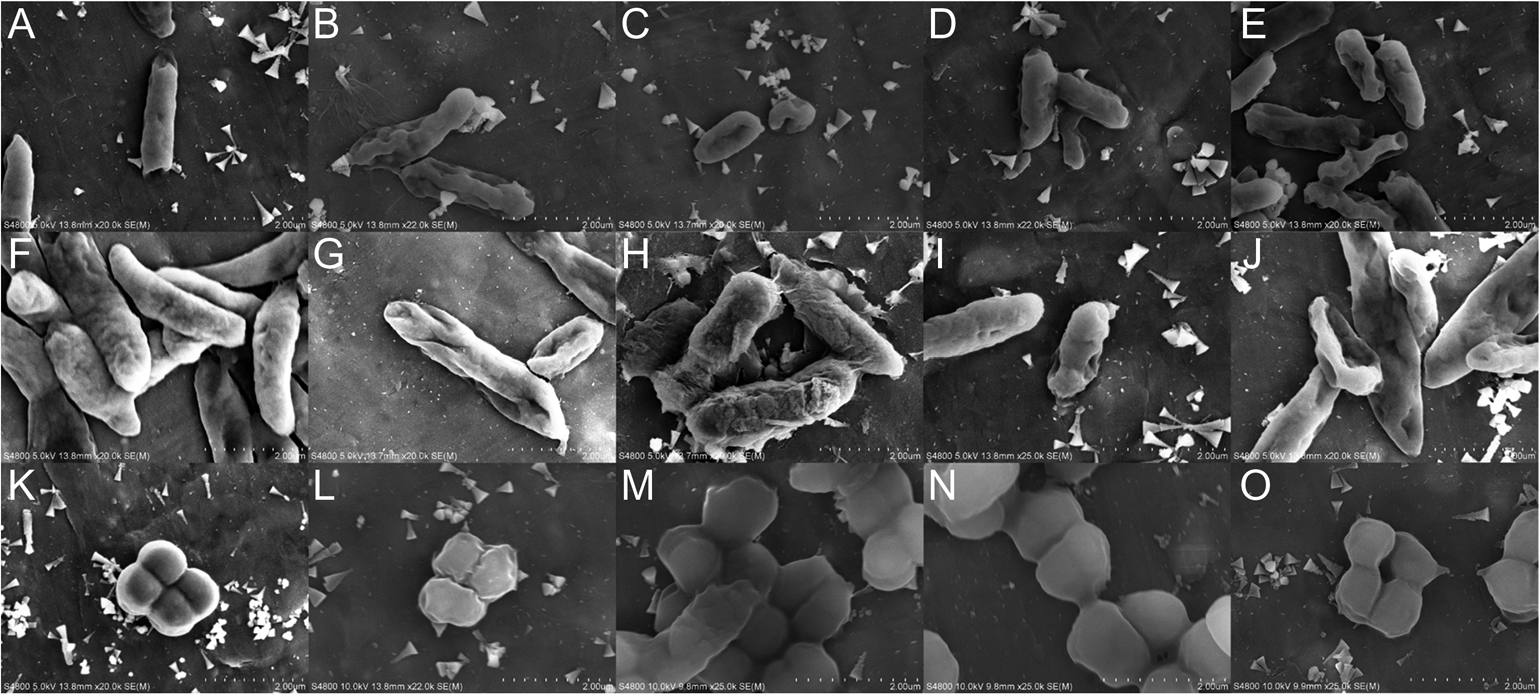博文
ABBS: Antimicrobial peptides from frog skin
|||
Molecular cloning and characterization of antimicrobial peptides from skin of Hylarana guentheri
Zhu Dong, Wenjie Luo, Hengren Zhong, Manchuriga Wang, Yanting Song, Shiming Deng, and Yingxia Zhang
Key Laboratory of Tropical Biological Resources, Ministry of Education, College of Marine Science, Hainan University, Haikou 570228, China
Acta Biochim Biophys Sin 2017, 49: 450–457; doi: 10.1093/abbs/gmx023
The cDNAs encoding antimicrobial peptides (AMPs) in the skin of Hylarana guentheri were identified, namely temporin (five peptides, termed temporin-GHa–GHd and temporin-GUa), brevinin-1 (one peptide, brevinin-1GUb), and brevinin-2 (eight peptides, brevinin-2GHd–2GHj, and brevinin-2GHb). Eleven of the 14 peptides have novel primary structures. Synthesized temporin GHa-GHd have broad-spectrum antimicrobial activities against Gram-positive bacteria (Staphylococcus aureus and Bacillus subtilis), Gram-negative bacteria (Escherichia coli, Vibrio alginolyticus, and Pseudomonas aeruginosa), as well as fungus (Candida albicans). Among these tested strains, S. aureus was the most sensitive to temporin-GHa–GHd with minimum inhibitory concentration (MIC) values between 6.8 and 12.9 μM. They also exhibited antimicrobial activities against Methicillin-resistant S. aureus with the MIC ranging from 12.7 to 51.7 μM. Interestingly, secondary structure prediction shows that there is no α-helix in temporin-GHb, which illustrates that α-helix is not required for the antimicrobial activity of temporin-GHb. NaCl (at final concentrations of 0.15–2 M) decreased the antimicrobial activity of temporin-GHa–GHd slightly, while human serum and S. aureus V8 proteinase had no effect on the antimicrobial activity. Scanning electron microscopy images of E. coli and S. aureus showed that the surface of microbial cells was considerably rough and shrived after 1 h of treatment with temporin-GHa–GHd at 37°C. The stabilities of temporin-GHa–GHd in human serum or in S. aureus V8 proteinase make them to be promising candidates of novel antimicrobial agents or models for the development of novel AMPs.

Scanning electron micrographs of microorganism treated with temporin-GHa–GHd
阅读原文: http://www.abbs.org.cn/arts.asp?id=4155
获取全文: abbs@sibs.ac.cn
相关论文:
1 Treating Flu with Skin of Frog
2 An Amphibian Host Defense Peptide Is Virucidal for Human H1 Hemagglutinin-Bearing Influenza Viruses
3 From frog integument to human skin: dermatological perspectives from frog skin biology
4 A frog cathelicidin peptide effectively promotes cutaneous wound healing in mice

https://blog.sciencenet.cn/blog-592748-1155916.html
上一篇:ABBS: Zip8 (Slc39a8) is involved in Cadmium resistance
下一篇:ABBS: Regulation of apoptosis by Apelin/APJ system